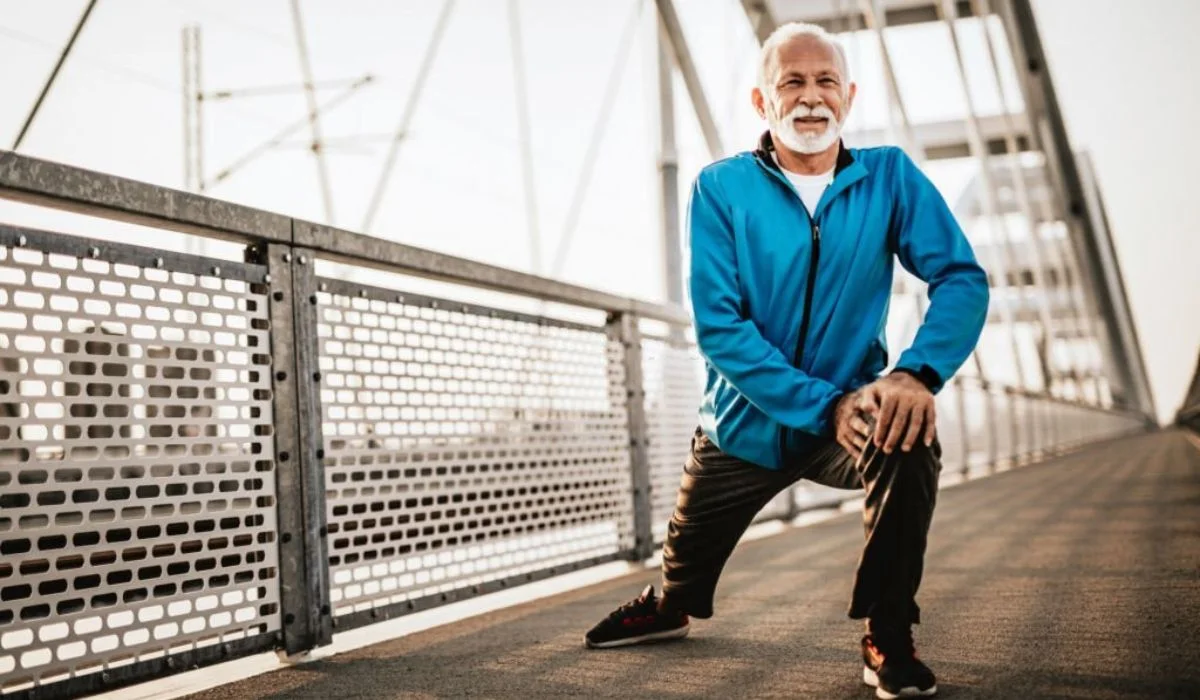Picture this: A group of older adults stretching their bodies with ease, executing full splits and backends. You could almost mistake this group for something out of a gymnastics program, but truth be told, these folks are mastering flexibility fitness for older athletes.
The older we get, the more we need to keep fit and active to stay physically well. Older athletes need flexibility training as it is important to avoid injury and improve sports performance. The body will naturally lose some of its elasticity as it ages, but introducing particular workouts and tactics can aid older athletes in preserving and increasing their motion. Today’s article delves into the advantages of flexibility training for aging athletes, what exercises and techniques work best, plus how to include them in your exercise regimen.
How Flexibility Training Helps Older Athletes?

Older athletes’ flexibility training does not just have the advantages of the body but also has advantages in mind and spirit. Stretching movements can alleviate tension, encourage calmness, and enhance your general mood. Envision yourself feeling supercharged afterward from an intense stretch — raring to go make things happen!
“Fitness programs should include flexibility exercises for all age groups; older adults in particular benefit,” Burr Ridge personal trainer Eric Nelson says. Flexibility exercises work on increasing joint mobility and muscle elasticity to reduce the risks of injury and improve overall athletic performance. The problem with growing older is that as our muscles and tendons get tighter there’s less freedom of movement. But by incorporating regular and strategic flexibility workouts, we can push back against the inevitable aging of our muscles and joints allowing us to continue moving as freely as we do today.
Effective Exercises For Improving Flexibility
1. Warm-up
The warm-up exercises should always be dynamic as they enhance blood circulation, warm up the muscles, and get ready for stretching. It could be active stretching such as arm circles and leg swings or light cardio like running or cycling.
2. Static stretches
This includes holding a stretch with very little resistance in the muscle for an extended time. Firstly- pick 3 or 4 main muscles to stretch regularly in your routine. Stretching exercises such as hamstring stretches can be performed whilst sitting on the floor with one leg extended straight out and reaching forward towards your toes.
Stretch for 20–30 secs while holding it, then try on the other side. Remember to take deep breaths and ease into each stretch until you feel mildly uncomfortable. Be sure you do 3 sets of every stretch (or reps). Then increase the reps as you progress. “Perform static stretches post-workout” (or wherever else you feel the need to stretch)
3. Dynamic stretches
Another good option for older athletes is dynamic stretching. What is the difference between static stretching and dynamic stretching? Well for starters, dynamic stretching takes you through a complete, unrestricted range of motion while in constant motion. These exercises will be muscle warm-ups, to be ready to perform. Do arm circles, leg swings, or torso twists before the exercise/sport you chose.
Performing dynamic stretches before a workout to loosen up the muscles, warming up, and facilitating coordination is beneficial for more mature players, helping them improve performance while decreasing injury risk.
4. Use foam rollers and massage tools
Using foam rollers or any other self-massaging tool such as a tennis ball, massage stick, etc., can ease muscular contraction/release tension and promote flexibility. Target specific areas that tend to be tight or susceptible to injury with these tools.
5. Practice yoga or Pilates
Stretching movements — Yoga is a wonderful example here as they’re fantastic for a range of motion, balance, and helping to build deeper core strength too. Stretches are usually a mix of both static (focused hold) and dynamic (movement) movements and can be adjusted for all levels of fitness.
Always do so in consultation with a licensed healthcare provider or certified personal trainer, and before engaging in or implementing any such weight training or flexibility program or routine, in part or whole. They can create custom-built, personalized programs for you.
Conclusion
Let your body — because we get older and these bodies don’t bounce back the way they used to. Don’t overdo something and listening to your body is quite essential as mentioned previously. Stretch slowly and gradually work up to longer holding times without straining or hurting yourself.
Enough with the stilted strictness. Set aside time for supplementary, flexible workouts regularly and gain access to the many advantages that flexibility can provide. Age is just a number and never let anyone tell you differently — your flexibility goes on forever! If looking to get back into shape after being sedentary for long periods and help prevent injury while maintaining your active lifestyle.
Flexibility is more than just physical mobility, it’s adaptability and resilience as well.
Read More: Managing Patellar Tendonitis In Athletes – How Does It Caused?